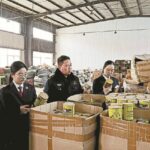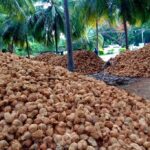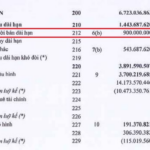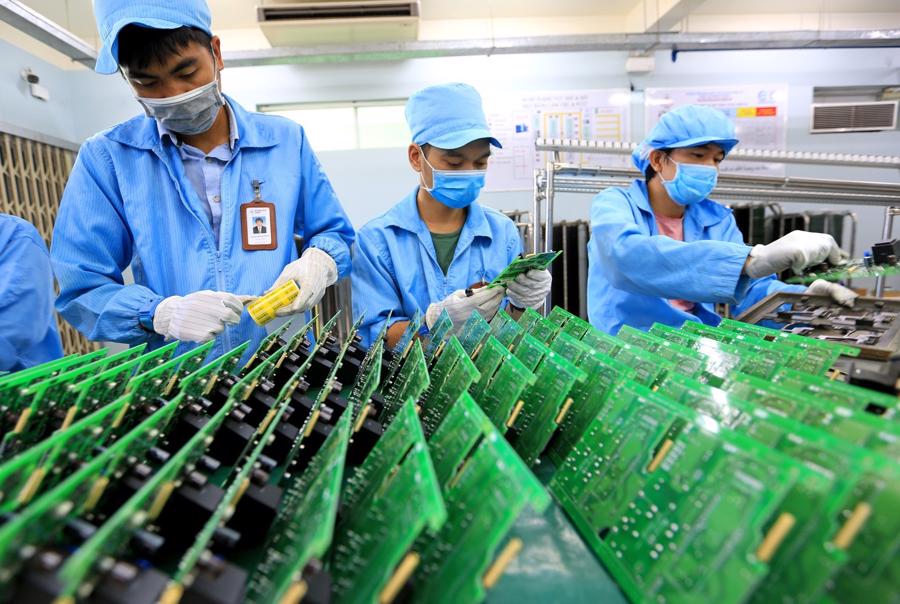
A drone hovers over a wheat field in Henan, China, as part of a pilot project for a fully automated farm.
Under the scorching summer sun in Zhangzhangli Village, Qingfeng County, Henan Province, a drone hovers over wheat fields, capturing data and monitoring the entire harvesting process below. On the ground, an automated harvester moves through the golden fields, loading the grain onto trucks. Nearby, sensors activate precision irrigation, tailoring water distribution to the needs of each plot.
This is the scene from the first harvest at a fully unmanned farm in Henan—a pilot project developed by Henan Agricultural University as part of a “science and technology backyard” program. Spanning approximately 233 hectares, this farm automates every step, from plowing and planting to harvesting, without direct human intervention.
Mr. Zhou Jianshi, chairman of the local agricultural machinery cooperative, explains that harvesting used to be a labor-intensive task requiring entire families to toil in the fields. “Now, machinery has completely replaced manual labor,” he says, pointing to the unmanned harvester in action.

An unmanned harvester and a tractor in action at the automated farm in Henan, China.
This summer, the farm deployed a range of smart agricultural equipment, including unmanned harvesters and tractors, a pneumatic seeder, a precision irrigation and drainage system, and a satellite-controlled reconnaissance drone using China’s self-developed BeiDou Navigation Satellite System.
According to Mr. Zhou, the adoption of automated technology has reduced the harvesting time from seven days to four. Moreover, labor costs have been cut by 40%, and water and fertilizer management costs have been lowered by 80%. Overall efficiency has improved by 30% compared to traditional methods used the previous year.
A key feature of this model is the combination of AI and field data. In the control center, large screens display information on soil moisture, crop density, pest and disease indicators, and more. Drones fly every 30 minutes from 9 am to 3 pm daily, collecting data from 10 fixed points. This data is then processed using predictive models to create precise irrigation and fertilization plans.
The irrigation system divides the field into six zones, tailoring water distribution to the specific needs of each crop area. What once required ten people can now be managed by a single person using a smartphone. Fertilizer usage has also been optimized: a 20% reduction in chemical inputs has resulted in a 30% increase in crop absorption.
According to Wang Qiang, associate professor at Henan Agricultural University, initial results show a 20% increase in wheat yield compared to conventional fields in the region.
“The farm in Qingfeng is becoming a replicable model for the modernization of agriculture in China,” says Professor Wang. In the next phase, the development team will continue to refine unmanned technology, further reduce costs, and optimize operational efficiency.

A drone operated by a young farmer in Shanxi, China, represents the modern approach to agriculture embraced by Generation Z.
From AI-driven data platforms to drones in the sky, China’s Generation Z farmers are embracing modern approaches to agriculture and redefining the meaning of farm work. Take 21-year-old Wang Huan from Shanxi Province, for example. Growing up in a farming family, he witnessed his parents toiling under the sun to spray pesticides and fertilize the fields by hand. Now, as a drone pilot, he can accomplish the work of three people in just over a day, using drones to spread up to two tons of fertilizer.
Wang is proficient not only in drone operation but also in using harvesters, seeders, and balers—tools that are becoming increasingly common in agricultural cooperatives across China.
Another example is 22-year-old Ding Zehui, also from Shanxi Province. After graduating from university, he returned to his hometown and joined the local cooperative. Ding convinced his family to invest in a BeiDou-equipped unmanned seeder, which operates continuously day and night with high precision.
According to Ding, today’s machinery is not only more efficient but also improves working conditions with features like air-conditioned cabins and user-friendly controls.

A young farmer operates a drone for agricultural purposes in Shanxi, China.
This trend reflects the ongoing agricultural modernization in China. By 2024, the country had over 2.2 million pieces of agricultural machinery equipped with Beidou positioning. The comprehensive mechanization rate in farming, sowing, and harvesting has surpassed 75%.
The Chinese government has also set goals to promote high-tech agriculture, aiming for significant progress in building a modern agricultural system by 2027.
The combination of technology and young labor is making farming more appealing to Generation Z. On social media, hashtags like “Generation Z Tractor Drivers” and “Drone Farming Vlogs” attract millions of views.
Wang Shumin, Wang Huan’s father, shares that three of his son’s classmates have joined the cooperative this year, inspired by the young generation’s real-life experiences with smart agriculture.
“They learn quickly, have a genuine passion for farming, and are not afraid of hardships,” he says. “Their achievements have far exceeded my expectations.”
Monitoring Telesales Calls: Police Crackdown on Counterfeit Milk Powder Syndicate Defrauding Over 60,000 Elderly Individuals in a 23 Billion VND Scam
The authorities have uncovered a scam targeting over 60,000 elderly individuals, with the perpetrators pocketing over 23 billion VND through the sale of fake camel milk. This despicable act of fraud has left a trail of victims in its wake, as the scammers preyed on the vulnerable with their deceptive tactics.
The Tricks of the Trade: Inflating Sales Figures in China’s Auto Industry, Toyota in the Spotlight
The intense price war in the world’s largest auto market has resulted in a challenging situation for many automakers.
“Enhancing Railway Connectivity: Unlocking Opportunities for Vietnam’s Ancillary Businesses.”
Representing businesses and government agencies, stakeholders believe that enhancing railway connectivity between major cities in northern Vietnam and China will spur growth for enterprises and the Vietnamese economy.











































